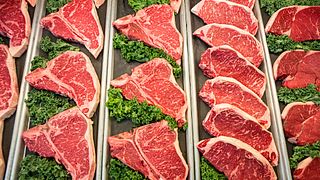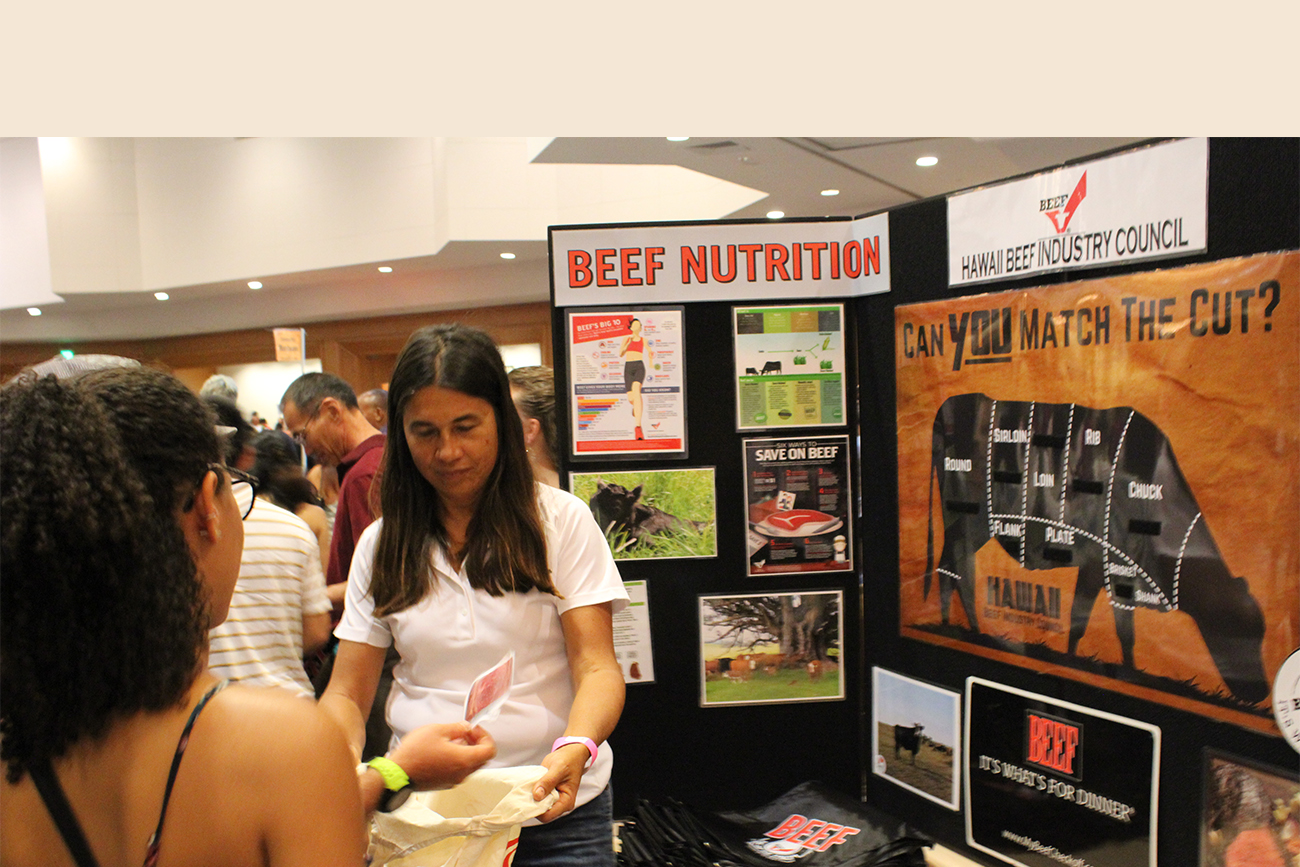What is the Beef Checkoff?
"The Beef Checkoff Program is a producer-funded marketing and research program designed to increase domestic and/or international demand for beef. This can be done through promotion, research and new product development, and a variety of other marketing tools. The Cattlemen's Beef Board and USDA oversee the collection and spending of checkoff funds." -- BeefBoard.org
For 35 years, the Beef Checkoff has supported the beef industry. Since its start in 1985, the Checkoff has significantly and positively altered the beef industry’s course, providing much-needed funding for promotion and research while also serving as a unifying force to consumers regarding all things beef. The Beef Checkoff has brought producers, industry organizations and stakeholders together with a common purpose – driving demand for beef. Click below for more on how the Beef Checkoff works for you
CURIOUS ABOUT THE BENEFITS OF THE CHECKOFF TO YOU AS A PRODUCER?
HEAR FROM HBIC CHAIR - Jeri Moniz
NCBA's Cattlemen to Cattlemen series
For more than 60 years, grassroots producer engagement has driven the demand for beef through the Federation of State Beef Councils. Ultimately, it is cattle producers, like Jeri Moniz, who are directing the Federation’s work.
Monthly Remittance Form
Established in the 1985 Farm Bill, the checkoff program requires, by law, each producer to pay $1 per head for each animal sold or harvested. Regardless if you are the seller or buyer, $1 must be paid by either side and should be discussed when the purchase is made. This program was designed to increase demand for beef and beef products through industry-sponsored activities of beef promotion, research, and consumer and industry information on the state and national levels. Information is required by (7 CFR 1260.201). Failure to report can result in a fine. Information is held confidential (7 CFR 1260.203).
Mail to:
Hawaii Beef Industry Council
PO Box 934
Hilo, HI 96721
Completing A Monthly Remittance form
This form should be completed each month and should include all cattle purchased during the previous month. You have until the 15th of the following month to send in the form and money. (EXAMPLE: If you buy cattle in January the form and a check is due February 15).
MONTH – The month in which the cattle were purchased.
ID NO. – Whatever number you use to file with the IRS (Federal Identification Number). Individuals should use their social security number.
COMPANY – Company's name or, if you buy as an individual, your own name.
LATE CHARGE – Failure to remit checkoff assessments by the due date will result in a late payment charge of 2% per month, compounded monthly, until all amounts due are paid.
STATE OF ORIGIN – The state where the cattle resided for at least 30 days prior to the time they were bought or sold. If they came from another state within the last 30 days, write in the abbreviation of that state. Otherwise, write the abbreviation for your state.
Example: If you buy cattle that have been in your state for only 20 days, the state of origin is the state they came from, not your state.
TOTAL NUMBER OF HEAD MARKETED – The total number of cattle you purchased.
NUMBER OF HEAD NOT ASSESSED – Cattle for which you received a non‐producer status form, a brand inspection certificate showing collection of the checkoff within 10 days of the transaction or cattle which you purchased from an auction market.
NUMBER OF HEAD ASSESSED PER STATE – This is the number of animals on which you collected checkoff dollars. It is the total number of animals marketed minus those not assessed.
TOTAL – Total for the entire month. Just add each column.
AMOUNT DUE – The number in this box is the amount due. Send your check along with the whitecopy of this form to the:
Hawaii Beef Industry Council
P.O. Box 934
Hilo, HI 96721
(808) 333‐6755
PENALTIES – You can be subject to two penalties:
- A civil penalty of up to $7,500 per violation.
- For fraudulent use of a government form a fine up to $10,000 and imprisonment up to five years.
Choose STate of Origin Prepayment to Support Beef Promotion in Hawaii
The United States Department of Agriculture (USDA), which administers the Beef Check-Off, has approved a State of Origin Prepayment Option. This rule gives producers the opportunity to voluntarily prepay the $1 per head check-off to the Qualified State Beef Council located in the producer's State of Residence prior to sale, effective October 1, 2002.
What this means is that producers retaining ownership can prepay the dollar to Hawaii before the cattle are shipped to the mainland for feeding and eventual harvest. At that time, the producer presents to the processing plant a paper showing the check-off was already paid, so that the plant does not collect the dollar again. In the past, all of the check-off dollars for cattle shipped to the Mainland were benefiting the State where the cattle were eventually processed. Now that dollar can be prepaid and stay in Hawaii for Beef promotion here. The rules state: "Any producer who is shipping cattle of his own production out of the state for feeding, finishing, backgrounding, or grazing, & plans to sell the cattle rather than return them to their state of residence, MAY elect to prepay the assessment to the state beef council in his state of residence if so desired."
Prepayment forms have ID numbers on the forms for tracking purposes and therefore need to be mailed to you. To request prepayment forms, please CONTACT US.
Optional Producer Redirection of Checkoff Assessments Form
A final rule was made for the Beef Promotion and Research Order (Beef Order) to add provisions allowing producers subject to these Orders to request, under certain circumstances, that their assessments paid to a State board or council authorized under their respective statutes, be redirected to the national program.
To fill out a redirection form CLICK HERE.
Remittance FAQ
P.O. BOX 934
HILO, HI 96721
Promotion
Includes advertising, merchandising, and new-product development, as well as training and promotional partnerships with restaurants and supermarkets that stimulate sales of beef and veal products.
Research
Provides the foundation for virtually all checkoff funded information and promotion projects by providing the science related to beef nutrition, beef safety and pathogen resistance. The checkoff also invests in quality enhancement and new-product opportunities, as well as analysis of consumer trends, perceptions, and concerns about beef and the beef ranching and farming community.
Consumer Information
Helps enhance beef’s image by sharing nutritional data and other positive messages with targeted news media, food editors, dietitians, physicians and other individuals and groups who influence consumers’ food knowledge and choices.
Industry Information
Strives for an accurate understanding of the beef industry and helps maintain a positive cattle-marketing climate. Also provides factual information to correct misleading or inaccurate publicity about beef safety and environmental and animal-welfare issues.
Foreign Marketing
Identifies and develops international markets for U.S. beef and beef variety meats through programs aimed at expanding market penetration, gaining new market access, improving global consumer perceptions and building trust in U.S. beef.
Producer Communications
Informs producers and importers about how their checkoff dollars are invested and communicates specific program results. This includes an annual report, informational advertising, coordination with beef and dairy industry media, direct communication with producers and a survey of producers about what they want and expect from their checkoff.
If you have any questions, please message us or call (808) 333‐6755
Learn more about the Beef Checkoff Program on the Beef Board's About page.
